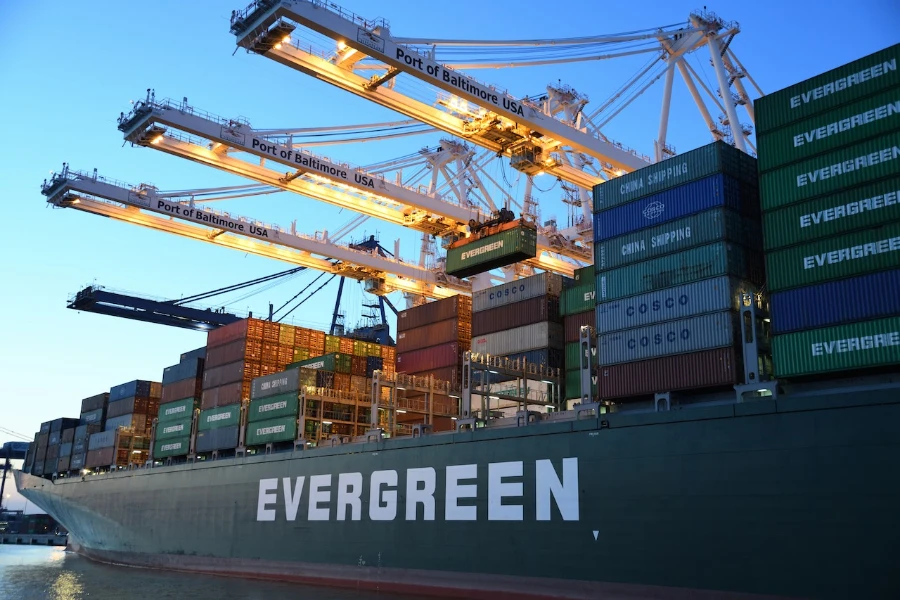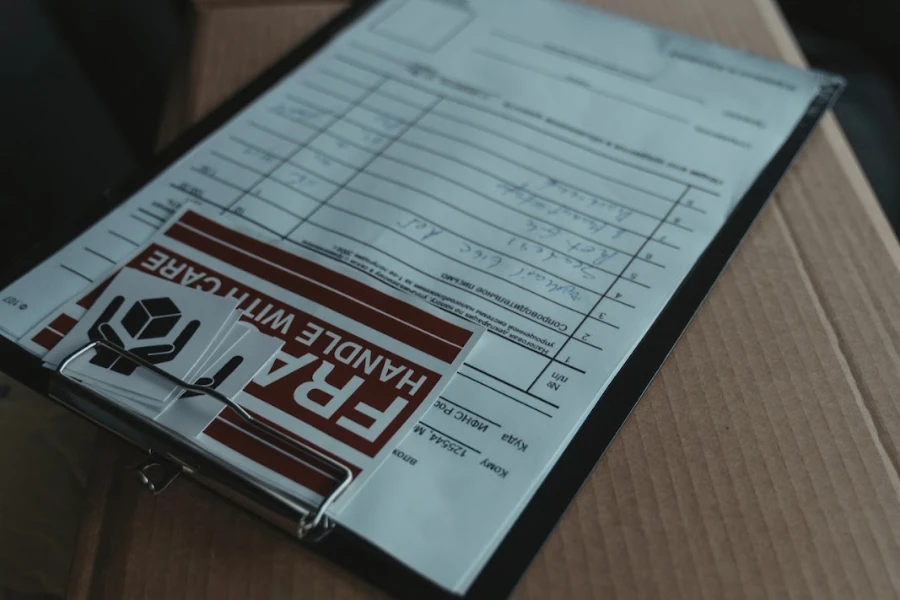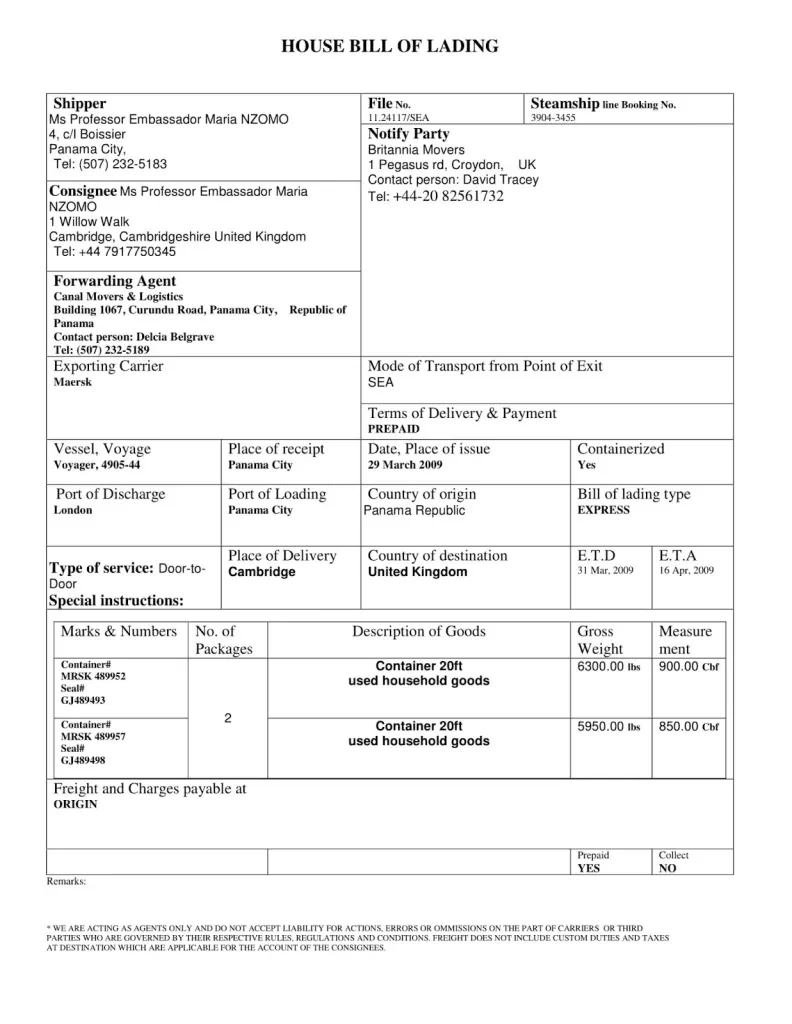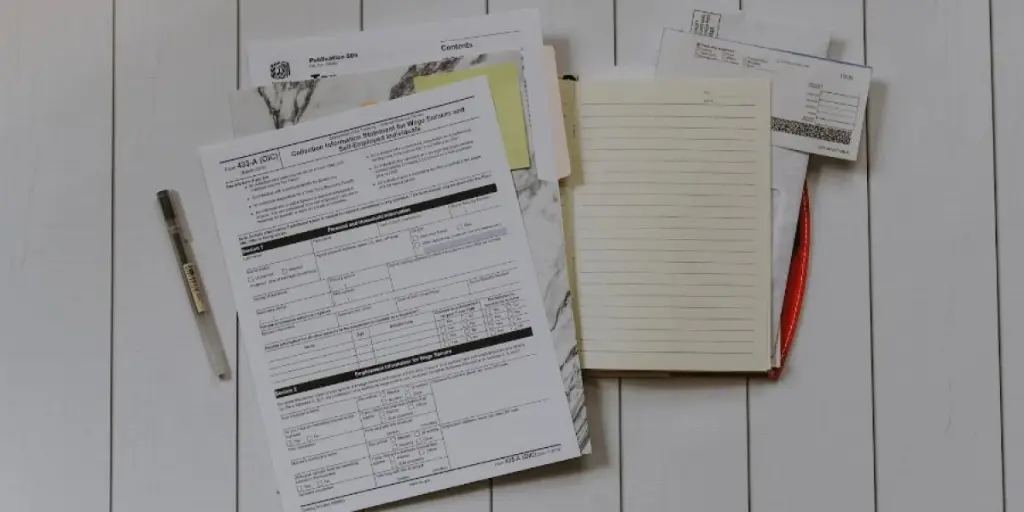In the shipping world, a bill of lading is an essential document that outlines the terms and conditions of transport. A bill of lading is considered a “contract of carriage” as it governs how the cargo will be handled from pickup to delivery. The term “lading” comes from the word “load,” which refers to loading cargo onto ships or trucks for transport across land or sea.
There are a few types of bills of lading, but it’s critical to utilize the correct type to track shipments and make sure they arrive at their destination safely. House bills of lading are one of the most common forms used in ocean freight shipping. Understanding what they are, who issues them, and how to use them effectively can help businesses avoid costly mistakes and ensure that their shipping process runs smoothly.
Table of Contents
What is a house bill of lading?
Who issues house bills of lading?
What is the purpose of a house bill of lading?
What should every house bill of lading include?
House bill of lading vs master bill of lading
Protecting the cargo with proper shipping documentation
What is a house bill of lading?

A house bill of lading (“HBL”) is a legal document issued by a freight forwarder (we’ll get to who shortly) that acknowledges that it has received goods to be shipped. In general, the HBL will be issued after an inspection of the cargo has been completed. This ensures the consignee (buyer/importer) that there are no missing or damaged items and that nothing has been added to or removed from the shipment before it leaves port.
HBL includes the names of all parties involved in the shipment, as well as information about its contents and value. This can help ensure that everyone involved in a shipping process knows what they are responsible for and how much they will be reimbursed if there is damage or loss. The house bill of lading also includes a description of any shipping instructions provided by the shipper, but it should not be considered an endorsement or acceptance by either party.
Who issues house bills of lading?

Most bills of lading (e.g., master bill of lading) are issued by a shipping line—the company that owns and operates actual carriers. But not all businesses have large-scale shipments that take up entire containers, so they can’t negotiate directly with the shipping companies. This is where house bills of lading come into play. They are issued by non-vessel operating common carriers (NVOCC), who buy cargo spaces from operating carriers in bulk quantities, and then resell them to small and mid-sized shippers at a smaller profit.
In this sense, an NVOCC issues a house bill of lading to cover a consolidation shipment—that is, an assortment of parcels shipped by various companies that have been grouped by the forwarder. For example, once receiving all shipments from each shipper and consolidating them into one large shipping lot, the forwarding company issues multiple house bills for the respective shippers.
What is the purpose of a house bill of lading?
The purpose of a house bill of lading is to document the shipment of goods from one location to another. But it serves other purposes as well—let’s take a closer look at them.
Proof of receipt

The house bill of lading is a formal acknowledgment that the carrier has taken possession of the goods and will deliver them to their final destination. It acts as an unconditional receipt for consignees, who will sign it when they receive the goods from the carrier.
Document of assurance

A house bill of lading is a document that certifies that the consignment has been received in good condition. It assures the consignee that their shipment has been loaded safely and without damage. Furthermore, this legal document makes the carrier liable for any damage or loss that occurs during transit.
Transfer of custody

The transfer of custody is one of the most important purposes for a house bill of lading. It allows the carrier to be legally responsible for the goods and makes sure that they are transferred to the rightful owner. If the consignee cannot provide the required documentation, they will not be able to take possession of their shipment.
What should every house bill of lading include?
Now that we know what is a house bill of lading and its role in the shipping process, this section will walk through the various sections contained within a standard HBL template.

| Section | Description |
| Shipper | Details about the actual shipper or exporter (consignor), including their company name, address, and contact information. |
| Consignee | Details about the receiver or buyer, including their company name, address, and contact information. |
| Forwarding agent | The name and contact information of the company that is responsible for transporting the goods. For example, this could be a freight forwarder or non-vessel operating company (NVOCC). |
| Exporting carrier | The name of the actual carrier that operates the shipping line. This company provides shipping space and containers to forwarding agents. |
| Notify party | The contact information of the entities who are supposed to be notified when the shipment arrives at its destination. |
| File number | Each consignment is given a unique ID so that it can be tracked across all stages of the supply chain. |
| Description of goods | A full description of the items being transported, including their quantity, weight, dimensions, number of containers, and any special markings. |
| Ports | The name of the ports where the goods will be loaded and unloaded onto and off of the vessel. They are known as “ports of loading” and “ports of discharge.“ |
| Shipment date | The day the items were loaded onto a vessel for transportation. This will let all parties know when the shipment was made and how long it took to reach its destination. |
| Terms of payment | This section details whether the freight charges are paid before or after delivery, as well as how much money is due at each stage of the process. For example, it could be collected by a cashier or prepaid by check or credit card. |
| Special instructions | This section provides instructions for how to handle and maintain the shipment. This is especially important for high-value orders or fragile goods. |
| Mode of transport | The manner in which the goods are transported from the point of exit to their final destination. Generally, there are three main modes of transportation: sea shipping, air freight, and land transportation. |
House bill of lading vs master bill of lading
The house bill of lading and the master bill of lading are both legal documents that contain information about cargo and serve similar purposes. They are used in maritime transportation to confirm that a shipment has taken place, to provide details about the contents of a shipment, and to establish ownership rights.
The only difference between an HBL and MBL is the issuing party. A house bill of lading is issued by an NVOCC or freight forwarder and usually lists the actual consignor and consignee. On the other hand, a master bill of lading is issued by the mainline carrier itself—and usually lists all parties involved in the transportation of goods.
Protecting the cargo with proper shipping documentation
When shipping internationally, it’s important to make sure that the cargo is covered by all appropriate documents and paperwork. Without a valid bill of lading, the cargo will be at risk of being held up by customs authorities or penalized. Learn more about shipping documents to get goods where they need to go quickly and safely!

Looking for a logistics solution with competitive pricing, full visibility, and readily accessible customer support? Check out the Alibaba.com Logistics Marketplace today.




